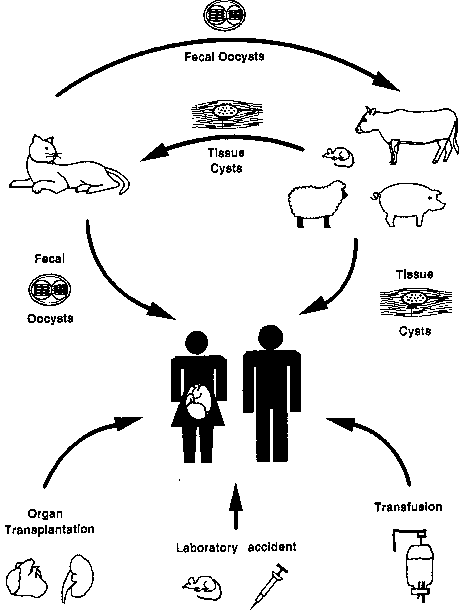-
"Members of the cat family
(Felidae) are the only known definitive hosts for
the sexual stages of T. gondii and thus are the
main reservoirs of infection.
-
Cats become infected with T. gondii by carnivorism.
-
After tissue cysts or oocysts are
ingested by the cat, viable organisms are
released and invade epithelial cells of the small
intestine where they undergo an asexual followed
by a sexual cycle and then form oocysts, which
are then excreted.
-
The unsporulated oocyst takes 1 to
5 days after excretion to sporulate (become
infective).
-
Although cats shed oocysts for
only 1 to 2 weeks, large numbers may be
shed.
-
Oocysts can survive in the
environment for several months and are remarkably
resistant to disinfectants, freezing, and drying,
but are killed by heating to 70oC for
10 minutes.
-
Human infection may be acquired in
several ways:
-
1) Ingestion of
undercooked infected meat containing Toxoplasma cysts;
-
2) Ingestion of the oocyst
from fecally contaminated hands or food;
-
3) Organ transplantation
or blood transfusion;
-
4) Transplacental
transmission;
-
5) Accidental inoculation
of tachyzoites.
-
The parasites form tissue
cysts, most commonly in skeletal muscle,
myocardium, and brain; these cysts may
remain throughout the life of the
host."- CDC (used with permission,
public domain)
|
